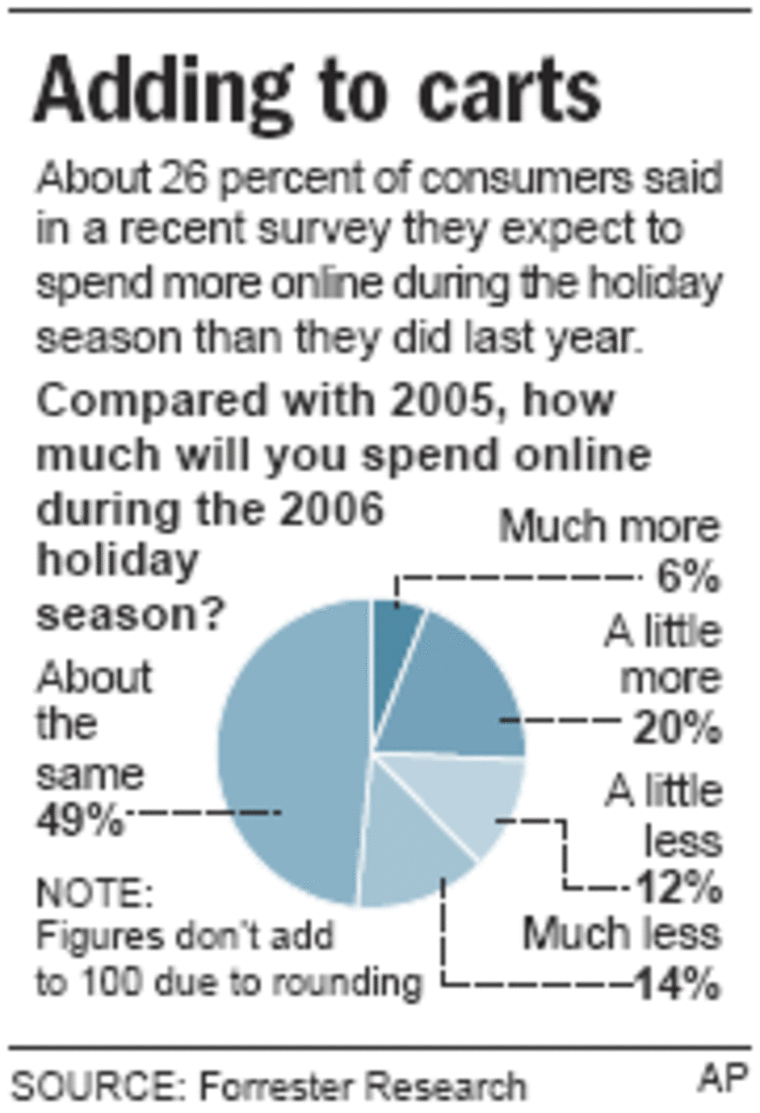Retailers are giving vocal online shoppers more opportunities to sound off about products this holiday season — and in return are hoping to convert more surfers into buyers.
Shoppers have been able to review and rate purchases on online-only retailers like Amazon.com for more than a decade. This year, a number of traditional retailers like Federated Department Stores’ Macy’s and Home Depot Inc. have added the feature, while destinations such as Yahoo! Shopping have made customer reviews more central.
“I live by this hammer. I would never swing another,” reads one tool review on Home Depot’s Web site. Thirteen fishermen weighed in with five stars for a particular lure on Bass Pro Shops’ online store, while on Macy’s site, two women exchanged notes on the fit of a certain winter coat.
Sam Decker, vice president of marketing and products at Bazaarvoice, which provides retailers the technology for such word-of-mouth marketing, said people who click on top-rated products from Bass Pro Shops’ home page are 59 percent more likely to buy than the average window shopper. At Petco Animal Supplies Inc., people who browse top-rated products are 50 percent more likely to buy. They also spend more money on the site, Decker said.
Until now, many retailers balked at the challenge of building the technology and screening every review for obscenity or spam, according to Andy Chen, CEO of Bazaarvoice’s main competitor, PowerReviews. The formal launch of the two companies, which also have the manpower to screen reviews, has helped accelerate the trend.
Retailers were also reluctant to cede control over carefully crafted brands and expose products to negative customer contents.

Even Amazon saw hesitation from manufacturers worried about bad reviews at first, according to Patty Smith, a spokeswoman for the company. But, she said, “once people actually saw it in action, saw that people could have honest debate and dialogue about a particular product, manufacturers and publishers realized it was good for them as well.”
Hewlett-Packard Co. started testing a reviews-and-ratings feature for its line of printers on Nov. 9. So far, thousands of reviews have been posted, and the company expects them to convert more browsers into buyers on shopping.hp.com.
Shoppers were already writing HP product reviews on other sites, said Sam Taylor, senior vice president of HP Direct, so HP added reviews to make its own home shopping site the most complete source for product information.
Taylor said negative reviews were hard to stomach at first, but they “give customers the confidence that these are unedited.” Plus, HP can use the direct feedback from real customers when it upgrades or redesigns products.
In practice, retailers need not fear an onslaught of bad reviews: Between 80 and 90 percent are positive 4 or 5 stars, according to Bazaarvoice and PowerReviews executives.
For shoppers, the ubiquity of glowing reviews may not be as helpful as retailers might hope, said Lars Perner, an assistant professor of clinical marketing at University of Southern California’s Marshall School of Business. People weigh negative information more heavily than positive, because most shoppers are naturally risk-averse.
“Nice information doesn’t usually help us guide against...what are the risks involved in buying this product,” Perner said. Knowing a product’s downsides might actually help shoppers soothe feelings of risk.
Perner pointed out another challenge for online reviews: The reader’s limited ability to judge the reviewer, and thus decide whether a negative review is valid or just venting, or whether a reviewer’s needs match their own.
Both Bazaarvoice and PowerReviews are grappling with that issue by asking reviewers to share some personal information. For example, on Golfsmith’s Web site, reviewers add information about their skill level, how often they golf and in what state or region. At Genesco Inc.’s youth-footwear retail division called Journeys, reviewers describe their personal style — trendy, casual or “punk with a preppy twist.”
PowerReviews also lets shoppers add photos to reviews, said Chen.
“The biggest difference between the online and offline experience is that you don’t see the other customers” as they pull things off the rack or dress up a new style, Chen said.
Incorporating real photos helps shoppers “know what it’s going to look like on a real human, so you can accessorize, match it,” Chen said.